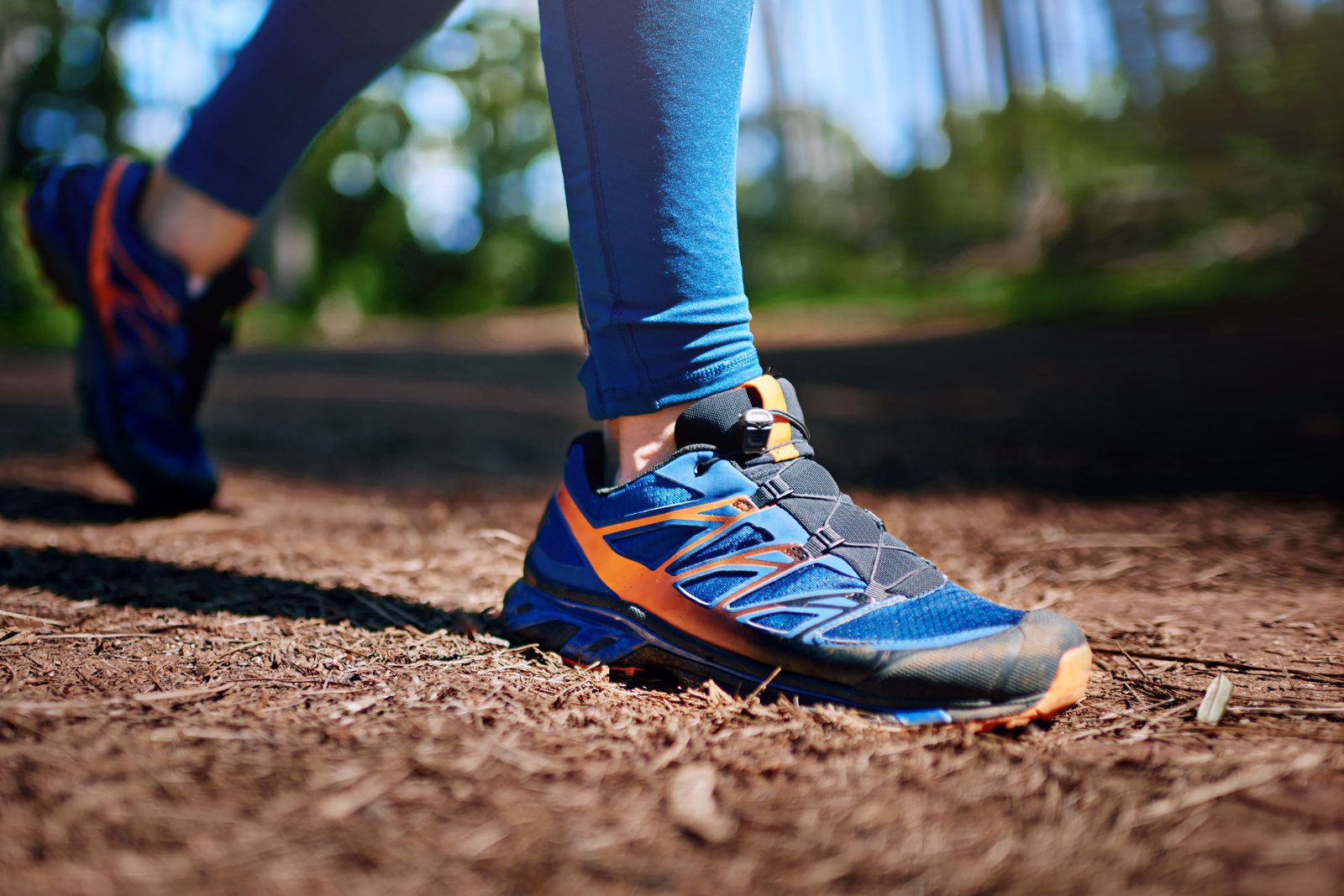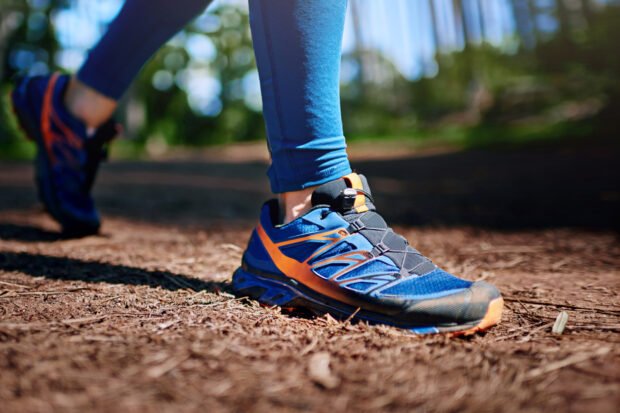
What Are Trail Running Shoes?
- Stouter outsoles with deeper lugs make trail running shoes ideal for uneven surfaces such as dirt, mud, and gravel.
- Trail shoes feature firmer midsoles to support your feet over the softer and irregular ground rather than the cushy road shoe feel.
- Thanks to the sturdy uppers trail running shoes staunch the shrapnel of flying debris, weather, and environmental elements on your feet. They’re even waterproof or insulated for extreme conditions.
Trail Running vs. Road Running: Which is Right for You?
- Rocky, uneven ground is where trail shoes excel, with firmer midsoles for more stability due to trail-specific outsoles.
- Some trail shoes include GORE-TEX insulation for a more all-weather runner.
- Deep lugs on trail shoes let you tackle mud, gravel, or dirt.
- These shoes have sturdy uppers that help keep out debris, allowing them to work well on rough trails.
- Road running shoes are lighter for sprints or tempo runs, so movements are quicker.
- These strong, breathable materials keep your feet cool in the hot weather running.
- These shoes are designed for asphalt and have flexibility and comfort for long road runs or interval training.
Trail Running Shoes: How To Choose The Right One
Before Buying Key Questions to Ask
Quick Comparison: Trail Running Shoes vs. Road Shoes
Feature | Trail Running Shoes | Road Running Shoes |
Best For | Uneven terrains, muddy trails | Paved roads, sprints, interval training |
Traction | High, with rugged outsoles | Moderate, suitable for smooth surfaces |
Cushioning | Firm midsoles for stability | Softer midsoles for comfort |
Durability | Protective uppers for rough environments | Lightweight and breathable materials |
Why Choose the Right Shoes Matters?
Final Thoughts
About the author
Trail Running Shoes vs. Running Shoes: Key Differences Explained
When parents look for the correct type of footwear their children should wear while working out, deciding between trail running shoes and regular running shoes can be a real difference maker. From all the shoes you have, each type is tailored to specific terrains and can use and be used for different purposes. They were created to protect your feet and make them comfortable. But how do you choose which one fits your needs most? To make an informed choice, read on to learn the distinctions.What Are Trail Running Shoes?Trail Running shoes combine the durability, traction, and flexibility found in hiking shoes with the thin shank of traditional running sneakers. These shoes are built for running on off-road terrain, such as gravel paths, forest trails, rocky slopes, and all such terrains beyond roads.Here's a breakdown of the features that set […]
margaret January 14, 2025














Be the first to leave a comment